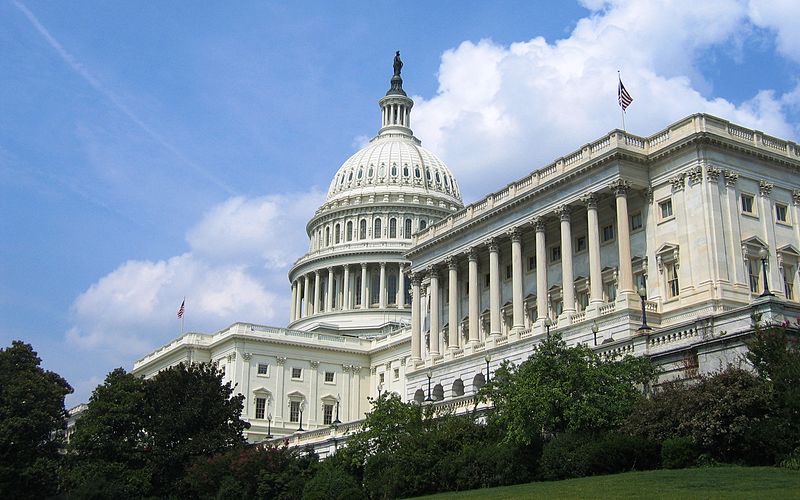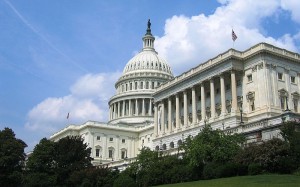
HASC Hearing on Sequestration: Cuts lack Strategic Assessments
There has been a great deal of discussion regarding the recent hearing by the House Armed Services Committee (HASC) on industry perspectives on defense sequestration. If you didn’t have a chance see the hearing, spoiler alert, industry doesn’t like it.
has been a great deal of discussion regarding the recent hearing by the House Armed Services Committee (HASC) on industry perspectives on defense sequestration. If you didn’t have a chance see the hearing, spoiler alert, industry doesn’t like it.
The message was very clear: sequestration will be bad for the defense industry and the uncertainty has left industry leaders with very little options and resources as how to prepare. All companies represented indicated that as a result of sequestration there would be job loss. Under the WARN Act, most major contractors will be required to notify employees of potential layoffs especially due to the fact that contractors are unsure how the law will be implemented and which programs will be cut.
Mass layoffs are relevant and should not be just statistics. They involve the livelihoods of thousands of families, and are certainly a serious component of sequestration. This was the economic message which has many on Capitol Hill quite worried.
The more important aspect of the hearing, however, was a consistent message from all industry leaders present. Austerity measures and budget cuts were not the problem, but rather that programs were not being assessed strategically due to changes in the national security agenda. Sequestration, which would result in across the board cuts, would not be discriminatory in what cuts were implemented.
The defense industry will be predictably worried about top line budget cuts that affect their core business. This is not a surprise. But the real concern should be the lack of strategic planning in national security that sequestration imposes.
Policy is ultimately what gets funded. In national security and more specifically defense acquisitions, it involves a strategic assessment of threats and determining a material solution to counter those threats. It is difficult to formulate policy if contractors and policy makers don’t know what funds will be available.
Robert (Bob) Stevens, Lockheed Martin’s CEO, stated,
“Our products last 20, 30 years, and right now we only have six months visibility…Right now there is crushing uncertainty.”
Not to mention: it would be administratively costly and be a disaster to implement.
While previous cyclical downturns in defense spending have been due to changes in the national security environment, sequestration would be based on arbitrary requirements in cuts as a result of political infighting in Congress. The worst form of austerity imaginable: automatic defense and security cuts with ambiguous interpretations and lack of planning.
This was the continued message by industry leaders at the hearing on Wednesday. Specific programs are not being cut due to strategic assessments in U.S. national security policy, but rather due to an arbitrary specific percentage (10%) across the board cut to all programs.
Sean O’Keefe, CEO for EADS North America, perhaps summarized it best:
“The mechanistic implementation formula as prescribed in law treats the contract for protective armor and the cost to cut the grass on military bases to be of equal priority.”
The lack of planning by the current administration has been due to the assumption that the sequester would not take effect. It was purposefully designed as bad policy to force compromise on Capitol Hill. These soft reassurances, however, were not enough for industry leaders present at the hearing on Wednesday.
Industry leaders emphasized that sequestration was the law and it was their fiduciary obligation to shareholders and employees to assume sequestration would take effect. Until that time, their biggest concern was being left without any guidance or any type of planning from the OMB as to what programs would be cut and how the administration would actually interpret the law.
Robert Stevens also testified,
““We are very hungry for more guidance, very hungry for more information so we can narrow this and behave responsibly.”
In addition to sequestration, there are serious changes in counterterrorism, defense policy, and the broader national security agenda that are shaping how the DOD and industry are attempting to strategically assess future threats. Sequestration only makes this planning more difficult, which in turn has a negative impact on U.S. national security.
This is a great time of uncertainty and change for industry. Contractors are making structural adjustments to compete in the new emerging business environment. Business and policymakers (more importantly) have to make strategic assessments of the future of U.S. defense and even more broadly national security policy.
After a war, there is an expected adjustment to budgets and contractors lose revenue. There are reasons, however, to believe that defense may not be a cyclical business. The security environment is constantly changing and difficult to predict. The sunset on the War in Afghanistan, recent developments in Africa, and the administration’s pivot towards Asia, are all relevant factors when considering the direction of national security.
We can only hope to focus on these important questions in the future, and not the effects of a poorly written austerity measure.
On August 1st, the OMB will testify on the effects of sequestration. Stay tuned for ASP’s continued coverage.





